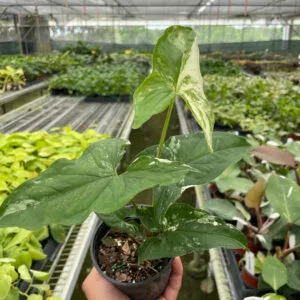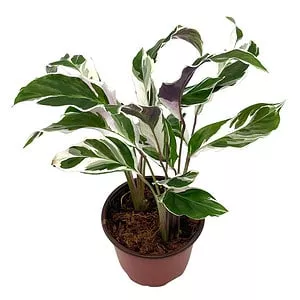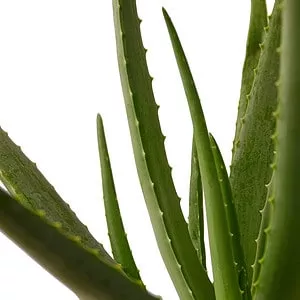No products in the cart.
Table of Contents
The Camellia japonica you can describe with two words exotic and fascinating. This broadleaf evergreen shrub is popular with gardeners and belongs to the tea family. Yet, many believe it is a complex plant to care for—shame on them.
One thing is valid while the rumors say the plant is complex, you can succeed effortlessly in cultivating it with the right advice and patience to foster them.

What are Camellia Japonica Plants?
The Camellia japonica many gardeners know as the Japanese camellia. This is because it originates from China, Korea, and Japan. In contrast, others appreciate the evergreen shrub as the state flower of Alabama. The evergreen shrub can grow up to 12 feet tall.
It has oval yet leathery, glossy dark green leaves growing on the stem clad. It is also a winter hardy plant found growing year-round in the southeastern parts of the USA. Still, the majority of the species are grown indoors.
In mid-summer, a cluster of buds appears, and removing all but one per cluster helps increase the flower size. The fantastic thing is you find flowers in mid to later winter leaving a display of color in the landscaping.
When grown in the northern parts, you find most plants the flower bloom in early spring, and it all depends on the climate. You can find different cultivars with different flower forms ranging from red, yellow, and white to pink.
Japanese Camellia Plant Care
Okay, so let’s start caring for your Camellia japonica plants to brighten up your winter garden or inside the home.
Japanese Camelia Potting Mix
Whether you have sasanqua camellias or Japanese camellia, the soil needs two essential things. The first is a slightly acidic potting mix, and the second must drain well. So, the best is before camellia planting; it helps to test the soil.
We recommend a pH range of 5.5-6.5 as too high a level stresses out the plant leading to yellowing leaves. If you find the ground alkaline, you can amend it using an acidic fertilizer or grow them in containers to control the soil pH.
These evergreen shrubs prefer acidic, fertile, and well-drained soil for rhododendrons and azaleas. Or you can mix a potting mix using clay, turf, potting soil, and compost.
Lighting Demand for Flower Buds
Most camellias need protection from the sun, especially in the afternoon when they are young indoor plants. But not receiving sun at all does not boost the bloom to flower.
So, the best is the morning sun with dappled afternoon shade. Then, as your plant grows older, the heavy foliage provides enough protection from the hot afternoon sun. Young camellias grow better with some partial shade at first.
Further, it also depends on your climate zone, as the blooming period of this beauty lasts from December to January. The notable thing is that older plants love direct sunlight in summer.
Placing Japanese camellias in a sunny location with half shade is also ideal. But during frost, it can harm the leaves, and a warmer yet protected area will work better.
Lastly, if you have a white or pink camellia, they prefer more shades than darker varieties.
Watering Camellia Hybrids
Okay, gardeners, brace yourself as the Camellia japonica, Camellia sasanqua, and most other camellia varieties must not have a dry root ball. Instead, it would be best if you kept it damp, and the following tips are proven useful.
Use a supply of rainwater or tap water where possible, as the high lime content does not harm your plant. When you feel the topmost layer of ground dry, you can water your plant. You can lower your amount of watering during October as the earth is moist, and adding more can lead to root rot.
But if your Asian beauty is in your home, keep an eye on the soil to moisten it. For outdoor Japanese camellias, regular mulching is needed to retain moisture. The best time to water your flower standing outside is in the morning and late evening.
Another note is that young plants will need more watering at first to help them become established plants. Check the watering section article of Aucuba Japonica Care Guide on our site for Japonica quick watering guide.
Temperature & Humidity
Now, one thing this evergreen shrub is sensitive to is a change in temperature or sub-zero temperatures. The cold induces a long-lasting bloom, and it is not best to keep your flowering shrub permanently in decorative beds in hardy regions.
We recommend placing them in tubs as you can relocate them to warmer temperatures to protect them from frost. Even a sunny cold garden is suited to show off their flowering. Your shrub blooms can thrive over five weeks in temperatures between 53.6° to 59°F (12° to 15°C).
Another thing is to remove any existing mulch around the planting hole and replace it with fresh mulch. We recommend using shredded bark to help keep the root ball warm.
Feeding Camelia
Most of the time, the camellia is not a heavy feeder. So growing camellias is not too much of a burden, as you can see by now. But if the growth is weak or you notice yellow leaves, you can fertilize them.
When new growth starts, you can do this in late winter or early spring. Preferably use a slow-release fertilizer around the drip line of your flower.
Before feeding your plants, give them water to prevent burning the shallow or new roots.
Propagating Camellias
You want to ensure your Asian beauty is always with you in the home or garden. So, you can do this using seed or cutting propagation.
Stem Cutting Propagation

The best time for stem cutting is late spring or early summer. First, choose a healthy stem with six leaf nodes and cut behind the 6th one. Next, remove all the nodes except for the top three.
You can dip the cutting in a rooting hormone before you plant it. Get a container ready filled with coarse sand and peat moss. Pot the cutting and water to keep the soil moist while removing excess drained water.
Place your potting medium in a warm spot with bright indirect light and cover it with a plastic bag. Open the plastic bag daily to mist your cuttings using distilled water. Remove any cuttings that look as if it is musty or dead.
You should notice a root system forming after three months, and once this happens, you can transplant each cutting into its pots.
Seed Planting

If you want to breed your shrub with seeds, we recommend using ones from a garden center. Or you will need to trigger the formation in your shrubs. You can do this as follow:
Take a brush and go over the pistil several times.
If the insemination is successful after the flower, it bears green fruits.
After the fruits ripen, the shell breaks open, and you may get up to 12 dark brown seeds.
You must break the seed’s dormancy to expose it to cold for a few weeks.
You can place the seed on the lower shelf in your refrigerator for 28 days.
During this time, the grains loosen from the germination capacity.
Fill a pot with soil and spread the seed while covering them with a small amount of ground.
Spray the soil but avoid stagnant moisture and keep them in a cool yet light location.
Also, avoid direct sunlight; you should notice new growth after two weeks.
Once this happens, you can take a spoon to remove each germ bud to transplant into their pots.
USDA Growth Zone

While camellias is a hardy evergreen shrub, it cannot tolerate extreme drought or winters below sub-zero. You can grow them outdoors living in zones 6 to 10. But if you live in a colder climate, you can grow them in pots to move from outside to inside the home.
Potting and Pruning Camellias
The camellia grows a shallow root, and when repotting, you need to consider this. The best containers to use are plastic potting mediums with enough drainage holes. Before adding soil, you can use a porous material at the bottom, such as pebble stones.
An important note is that you can repot your camellia every two to three years and shorten the roots. The same applies to outdoor planting; the hole should be twice the size of the shrub’s root ball. Then, in most regions, you can place them on the ground in spring.
Doing this allows for a long warm season to help establish the roots. When it comes to pruning, it helps to know your camellia hybrid type. Your Japanese camellia flowers mostly in winter; pruning them when the blooming season ends helps.
So when your shrub is completed flowering, you can:
Remove lower branches
Or you can shorten lower branches to form a thick canopy to encourage upright growth as tall trees
Remove dead or weak wood to make the lanky shrubs bushier
Thin out growth to give it a peony form
Camellia Japonica Varieties
Camellia sasanqua
The shrub is a gorgeous fall flower with a graceful form, flower colors, and a great fragrance to brighten the garden.
Camellia x williamsii
The shrub is a camellia hybrid and blooms after the Camellia japonica and is a hardy flower that will brighten up any place.
Camellia ‘Polar Ice’
If you live in the USDA hardiness zone 6, you can grow this shrub in your garden to withstand the winter cold.
Common Problems Petal Blight
This Asian beauty might be sturdy but is not immune to diseases and insects. One problem pest is scale insects that feast on the sap of the foliage. The best treatment for them is using an insecticide or horticultural oil.
You can collect the insects by hand or soak your shrubs with a nettle brew. Some efficient herbivores are roundworms and nematodes. Another concern is camellia leaf gall caused by a fungus that only affects camellias.
The leaves thicken and rapture into whitish fungal spores and become hardened and brown. The best treatment is to prune your plants and destroy affected leaves and dead branches in closed bags in the trash.
Lastly, camellia flower blight or camellia petal blight is a severe problem as the flowers turn brown and appear in spring. Again, the best is to pull off and destroy all the infected buds and remove everything around the shrub on the ground.
You must replace the mulch as this fungus lives in the soil. You can also use a fungicide spray for the condition and need to do soil drenches using a captain around the shrub every two weeks.
Frequently Asked Questions
When it comes to the camellia growth rate, it depends on the species you have. The sasanqua camellia grows faster than the Japanese variety, with a height of 7-feet. The Camellia japonica grows up to ten feet, and most camellias are considered mature after they begin to flower but can live long.
Depending on the hardiness zone you live in, the camellia can bloom from fall right through to spring.
There are many reasons why your camellias do not bloom. Here are some of them:
- Frost damage
- Unfavourable soil
- Pruning them at the wrong time
- Feeding too much fertilizer
- Drought stress or too much shade
When a bud drop and is brown, it results in underwatering in late summer from the previous year. It can also happen with fertilized plants fed too late or a temperature drop.
Yes, the evergreen shrubs can get a tea scale that causes the yellowing of the leaves’ shades. Under severe conditions, it can even cause the death of an old or new plant. Controlling the pest is difficult.
You do not have to deadhead the spent flowers as it will not encourage new flower buds, but removing the smaller ones and leaving the dominant buds will give a beautiful display. You can remove faded flowers to make your evergreen look tidy.
Whether you want to buy, sell or simply reach out to other plant enthusiasts, Plantly is the right place to be!
-
$44.99Sold By: Succulent Oasis
In stock
Succulent Plant Large Green Hindu Hoya.
Rated 4.84 out of 5 based on 352 customer ratings00Sold By: Succulent Oasis -
Free Shipping$55.95 – $60.95Sold By: A&K Plants
In stock
Syngonium Albo Plant – Rare and Beautiful Indoor Houseplant | 4-inch pot
Rated 4.95 out of 5 based on 66 customer ratings00Sold By: A&K Plants -
$19.99Sold By: BubbleBlooms
In stock
Calathea Stella, 4 inch, Rare Variegated Prayer Plant, Cathedral Plant, Green and White
Only 929 available and it’s in 1 people’s basketRated 4.81 out of 5 based on 279 customer ratings00Sold By: BubbleBlooms -
Free Shipping$47.95 – $49.95Sold By: A&K Plants
In stock
Aloe Vera Plant | Easy-to-Grow Succulent Plant | 6-inch pot
Rated 4.95 out of 5 based on 66 customer ratings00Sold By: A&K Plants












